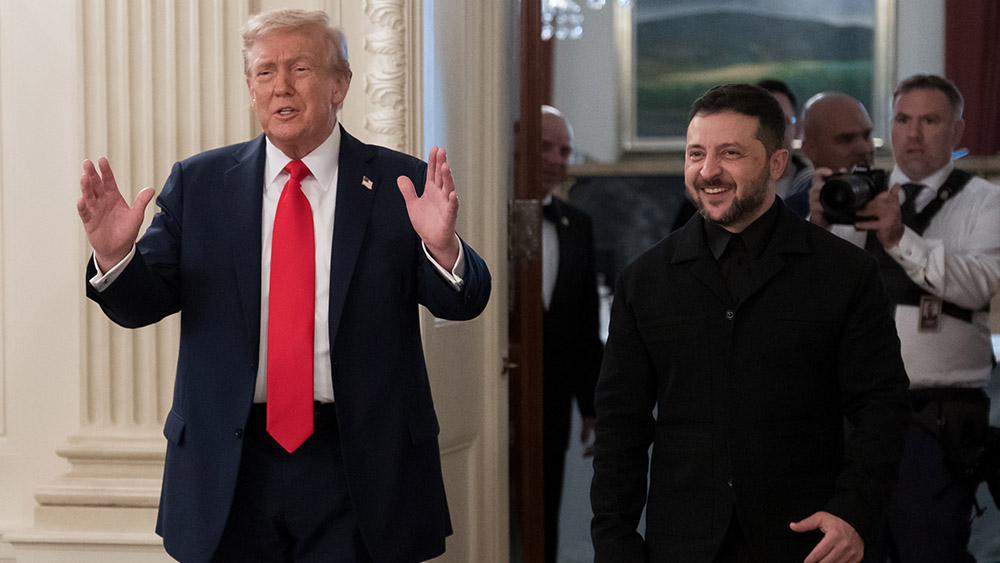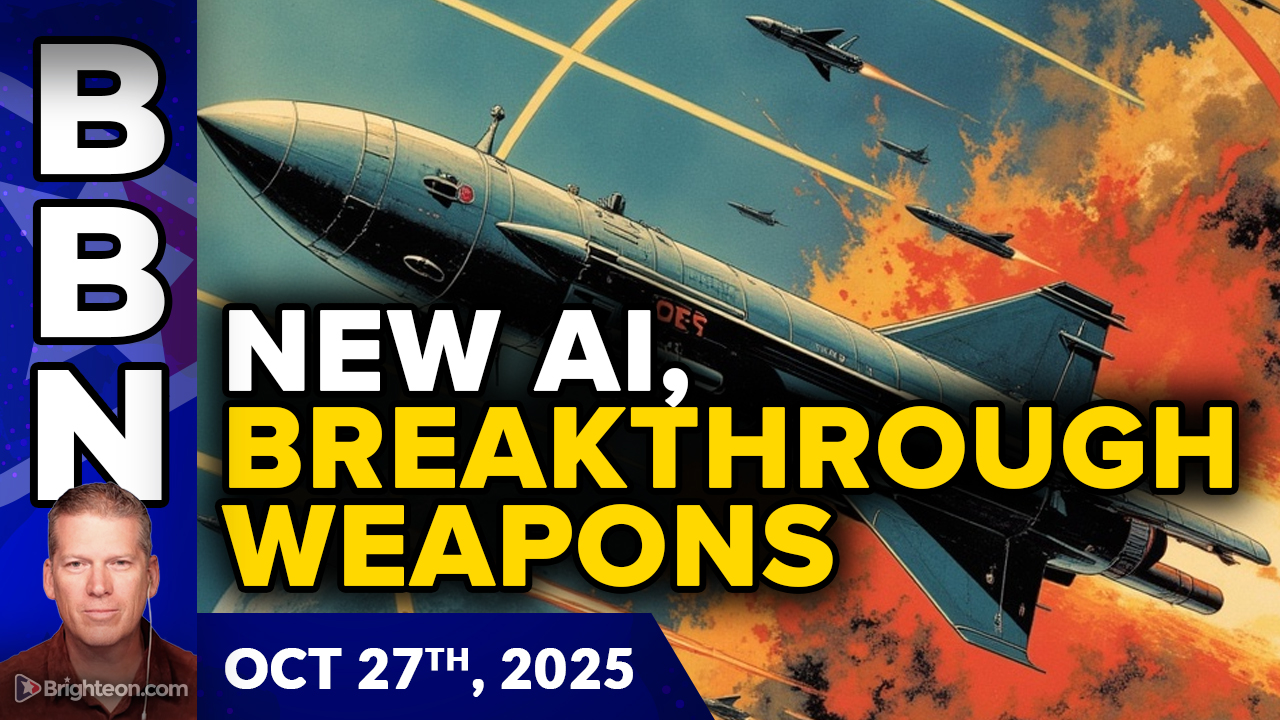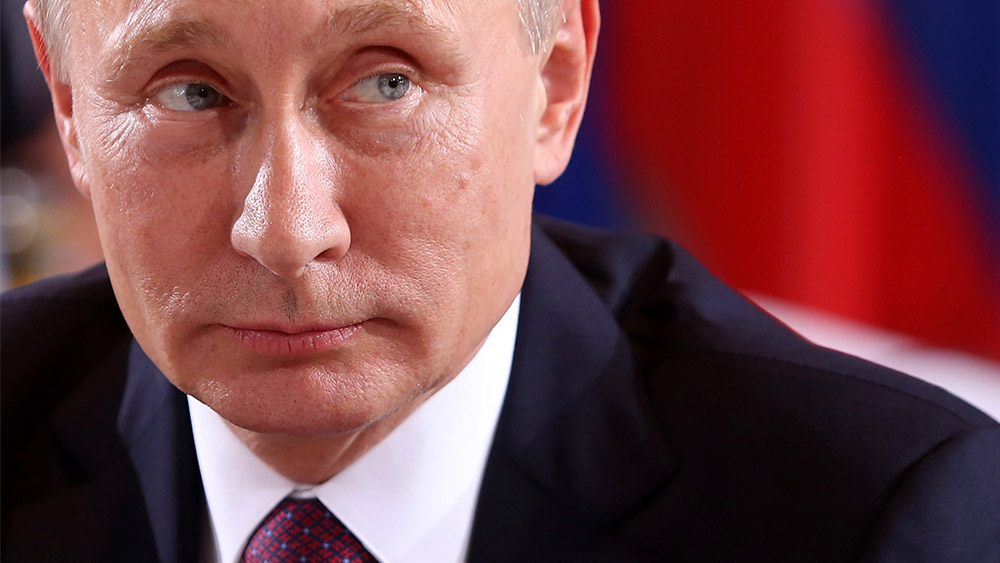 Parler
Parler Gab
Gab
- Ukrainian President Volodymyr Zelensky meets with President Trump to push for U.S.-made Tomahawk missiles amid escalating Russian strikes.
- Trump signals openness to peace talks with Putin, potentially meeting in Budapest, raising concerns about Ukraine’s leverage.
- Russia warns that supplying Tomahawks would mark a dangerous escalation, while Kyiv argues they are critical for defense.
- The U.S. weighs military aid against diplomatic efforts as Ukraine faces severe energy infrastructure attacks ahead of winter.
- Trump is brokering Middle East peace while navigating Ukraine’s demands and Putin’s tactical diplomacy.
Tomahawks: A game-changer or a provocation?
At the heart of Zelensky’s request are Tomahawk cruise missiles, capable of striking targets over 1,000 miles away—deep inside Russian territory. Such a transfer would mark a significant escalation, one Moscow has warned would trigger a “new stage” of conflict. Trump acknowledged discussing the weapons with Putin, quipping that the Russian leader “didn’t like the idea.” Analysts suggest Putin’s sudden openness to talks may be a tactic to delay U.S. arms shipments. “It does seem that Putin’s outreach is perhaps designed to thwart the potential transfer of Tomahawks to Ukraine,” said Max Bergmann of the Center for Strategic and International Studies. “It strikes me as a stalling tactic.” For Ukraine, the missiles are not just symbolic but tactical. Russian strikes have destroyed nearly 60% of the country’s gas production this month, leaving millions vulnerable as winter approaches. Zelensky’s government is now scrambling to secure emergency LNG imports from the U.S. to offset the damage.Trump’s deal-making calculus
Trump, fresh from brokering a Middle East ceasefire, has framed Ukraine as his next diplomatic challenge. Yet his approach—floating Tomahawks as both a threat and a bargaining chip—reveals a transactional style that unnerves European allies. “If this war doesn’t get settled, I may send Tomahawks,” Trump told reporters, adding that he prefers a negotiated solution. His potential summit with Putin, preceded by Secretary of State Marco Rubio’s talks with Russian officials, suggests a pivot toward direct diplomacy—one that could sideline Kyiv’s demands.The shadow of escalation
Russia’s latest barrage—270 drones and 10 missiles targeting energy facilities—underscores the urgency of Zelensky’s appeal. But with U.S. attention divided between Ukraine, Israel and domestic political fatigue, the White House faces mounting pressure to reassess its commitments. Trump’s ambivalence mirrors a broader Republican shift: skepticism over blank-check aid and a growing emphasis on Europe sharing the burden. Meanwhile, Ukraine’s ambassador to the U.S., Olga Stefanishyna, highlighted bilateral deals on critical minerals and energy as a fallback, signaling Kyiv’s need to diversify its partnerships.A fork in the road for U.S.-Ukraine strategy
As Zelensky departs Washington, the path forward remains uncertain. Will the U.S. greenlight Tomahawks, risking a Russian backlash, or will Trump’s outreach to Putin lead to a negotiated pause—one that leaves Ukraine vulnerable to frozen conflict and territorial losses? The answer may hinge on Trump’s self-described “art of the deal.” But for Zelensky, the stakes are existential: survival hinges on weapons today—and diplomatic leverage tomorrow. With Putin watching and Washington’s patience waning, Ukraine’s fate hangs in the balance. Sources for this article include: YourNews.com TruthSocial.com NBCnews.comRussia welcomes Japan’s push for a post-WWII peace treaty
By Zoey Sky // Share
Russia unveils nuclear-powered missile as U.S. weighs economic measures amid global tensions
By Finn Heartley // Share
Chinese military now utilizing AI to prepare AUTONOMOUS WAR MACHINES
By Lance D Johnson // Share
Over 10,000 Ukrainian troops trapped as Russian forces secure key positions
By Belle Carter // Share
New Mexico finds toxic “forever chemicals” in 99.7% of residents tested near air base
By Cassie B. // Share
Utah’s new digital ID promises privacy, but is it building the ultimate tracking tool?
By Lance D Johnson // Share
Governments continue to obscure COVID-19 vaccine data amid rising concerns over excess deaths
By patricklewis // Share
Tech giant Microsoft backs EXTINCTION with its support of carbon capture programs
By ramontomeydw // Share
Germany to resume arms exports to Israel despite repeated ceasefire violations
By isabelle // Share










